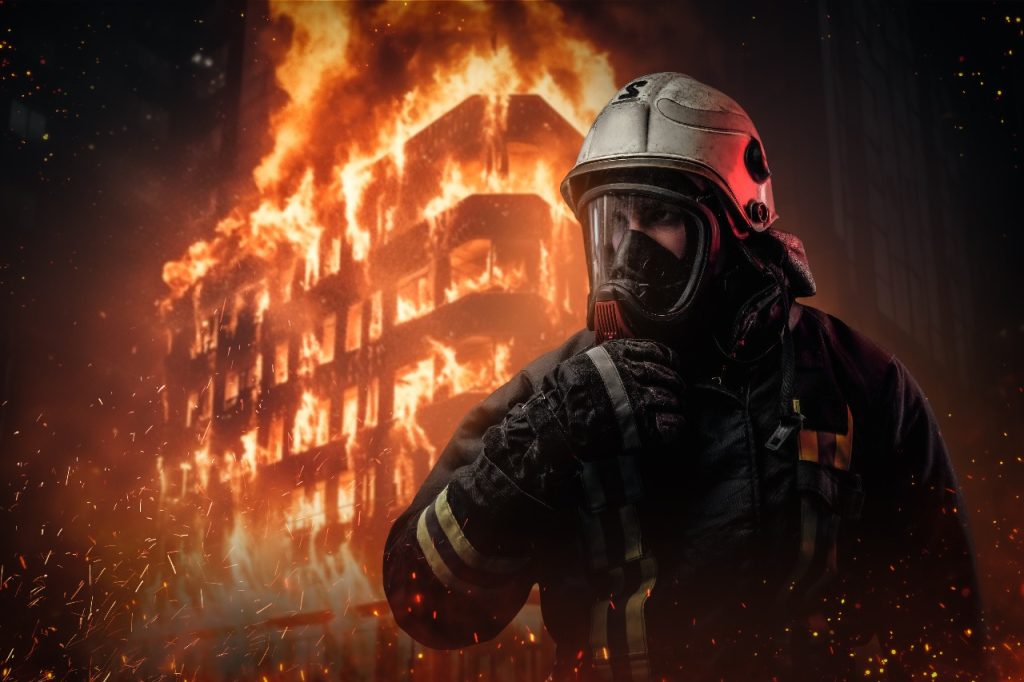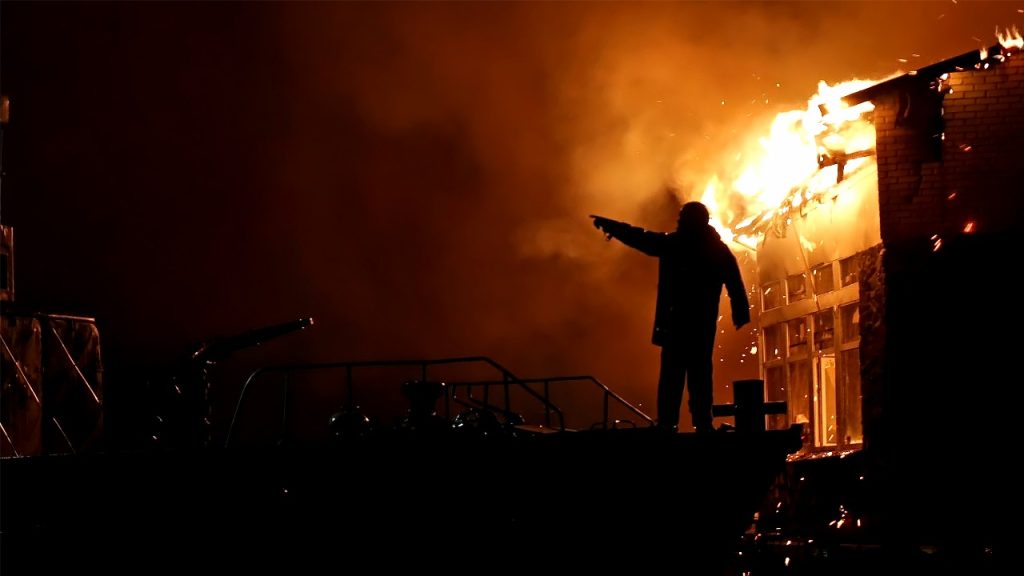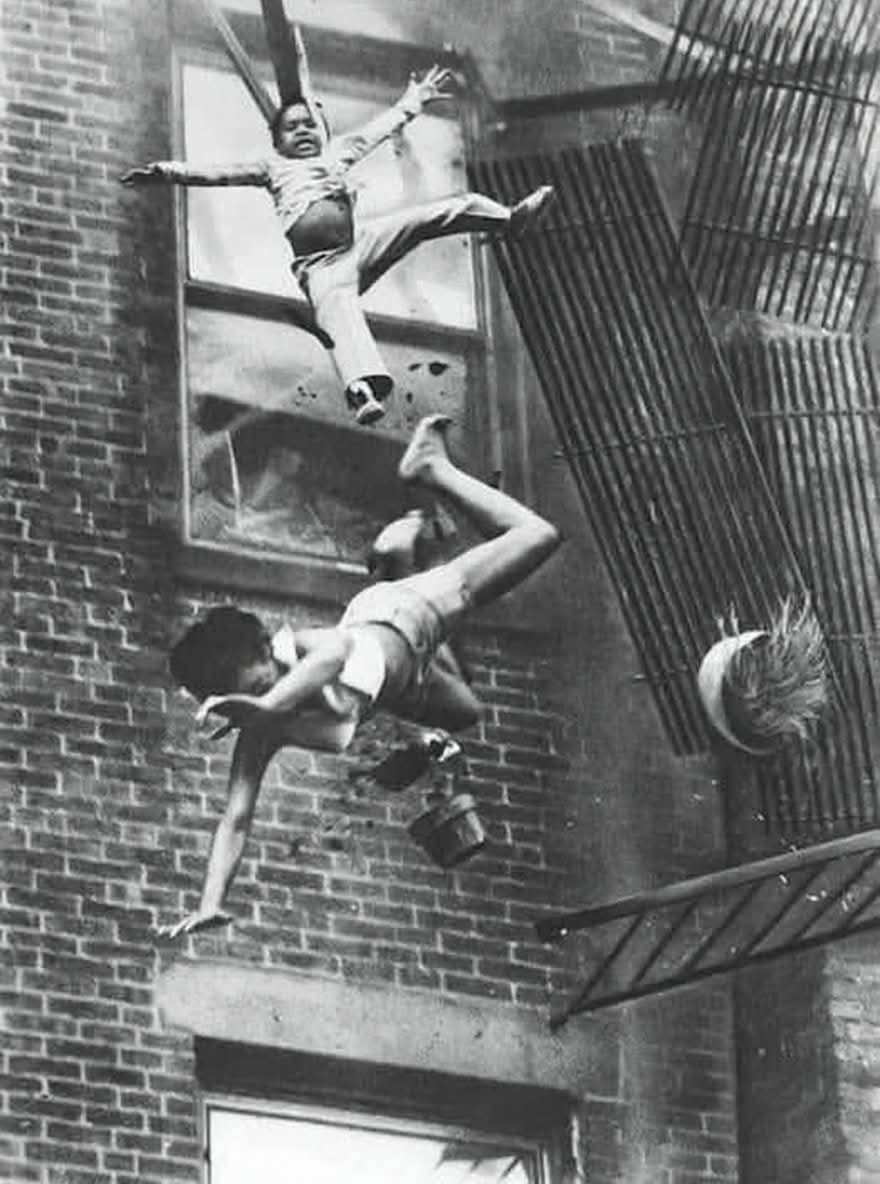Tragedy in Boston: The 1975 Fire That Changed Fire Safety Forever
Tragedy in Boston: The 1975 Fire That Changed Fire Safety Forever
A Photograph That Shook the World
On July 22, 1975, a blazing inferno in Boston’s Back Bay district seared itself into history—not only for the lives it took but for the haunting image that became one of the most recognizable fire photographs ever captured. The picture showed nineteen-year-old Diana Bryant and her two-year-old goddaughter, Tiare Jones, plummeting from a collapsing fire escape. Diana would not survive. Tiare, by a miracle of fate, lived.
The stark photo of their fall, taken by photojournalist Stanley Forman of the Boston Herald American, went on to win the Pulitzer Prize. But beyond the harrowing image, the incident exposed the deadly consequences of outdated fire escapes and inadequate building codes—ultimately forcing major reforms in fire safety across the United States.

The Fire on Marlborough Street
It was a warm Tuesday afternoon when fire broke out at 129 Marlborough Street, a century-old residential building in the city’s historic district. The blaze spread rapidly through the wooden structure, trapping residents on the upper floors. Without modern fire protection systems, the occupants had few options.
Desperate to escape, Diana and Tiare made their way to a fire escape attached to the side of the building. From below, firefighters extended a ladder toward them. But the old iron balcony—rusted, weakened by years of neglect—suddenly tore away from the brick wall under their weight.
As it collapsed, Forman’s camera froze the terrible moment: Diana and Tiare suspended in midair, just seconds before hitting the ground.
The Survivors and the Fallen
Diana Bryant died instantly from the impact. She was only nineteen, a young woman with her life ahead of her, caught in a disaster she could not control. Tiare, incredibly, landed on Diana’s body, which absorbed much of the shock. The toddler survived with only minor injuries.
Other residents, too, barely escaped with their lives. Some managed to flee down interior staircases filled with smoke. Firefighters fought courageously to rescue others, but the collapse of the fire escape underscored their helplessness in the face of unsafe infrastructure.
A Photo That Sparked a National Outcry
Stanley Forman’s photograph, published the next day, shocked the world. It was graphic, heart-wrenching, and controversial. Critics asked whether such an image should have been printed. But its undeniable impact forced conversations that had long been avoided.
The picture became more than a snapshot of tragedy—it was evidence. Evidence of negligence, outdated codes, and the dangers of relying on aging fire escapes as the last line of defense. Politicians, regulators, and the public could no longer ignore the human cost of inaction.
Fire Escapes: A False Sense of Security

In the 19th and early 20th centuries, fire escapes were considered a breakthrough in urban safety. They were mandated on many buildings as emergency egress routes. But by the 1970s, most fire escapes were decades old. They rusted, loosened from their anchors, and were often improperly maintained. Many were used as storage spaces, balconies, or makeshift extensions rather than functional escape routes.
The Marlborough Street fire revealed the hard truth: these iron skeletons, bolted onto brick facades, were never meant to be permanent. Over time, they became death traps.
The Aftermath: Changing Building Codes
The tragedy directly influenced sweeping changes in fire safety codes in Boston and beyond:
- Abolition of External Fire Escapes
Cities across the U.S. began phasing out external fire escapes as acceptable means of egress. Instead, buildings were required to provide enclosed, fire-rated stairwells inside structures. - Stricter Inspections & Maintenance
Fire departments gained authority to inspect escape routes and demand repairs or replacements. Neglected structures could no longer pass unnoticed. - Emphasis on Sprinklers & Detection Systems
Automatic sprinklers, smoke detectors, and alarm systems became critical parts of new safety codes. The focus shifted from evacuation alone to active fire suppression and early warning. - Greater Accountability for Landlords & Builders
Property owners were held liable for unsafe conditions, with fines and penalties for failing to meet standards. The concept of “fire liability” gained traction.
The Legacy of Diana Bryant
Though her life was cut tragically short, Diana Bryant’s death became a catalyst for change. Tiare’s miraculous survival underscored both the cruelty of fate and the urgent need to ensure such accidents never repeat.
The haunting photograph was not just a piece of journalism—it became a tool of reform. Firefighters, safety advocates, and lawmakers used it to push for modern codes, stronger enforcement, and public awareness.
Lessons for Today
Fifty years later, the Marlborough Street fire continues to resonate, especially in regions where fire safety remains inadequate. Its lessons are as relevant now as they were in 1975:
- Fire escapes are not enough. Modern buildings must have integrated, enclosed fire-resistant exits.
- Regular inspection saves lives. Old structures require constant maintenance; neglect is deadly.
- Fire suppression is prevention. Smoke alarms, sprinklers, and detection systems provide crucial minutes for escape.
- Human lives must come before cost. Safety upgrades are not luxuries—they are moral obligations.
- Public awareness matters. A single image changed U.S. fire safety forever; continued advocacy can save lives worldwide.
Why It Matters for Pakistan and South Asia
The story of Boston in 1975 is not distant history—it mirrors challenges faced today in many South Asian cities. Buildings without proper fire exits, narrow staircases, absence of sprinklers, and neglected codes have contributed to countless tragedies in Karachi, Dhaka, Delhi, and beyond.
Fires in factories, apartments, and commercial centers repeatedly claim lives due to locked exits, poor maintenance, or lack of enforcement. The lesson is universal: fire safety cannot wait for disaster to force change.
By learning from Boston’s tragedy, developing countries can prioritize proactive measures—strengthening codes, empowering inspectors, and educating citizens about evacuation drills and emergency preparedness.
A Photograph’s Enduring Warning
The image of Diana and Tiare falling remains one of the most powerful photographs of the 20th century. Painful as it is to look at, it carries an enduring message: safety systems fail when neglected, and the cost is always human. For Diana Bryant, there was no second chance. For Tiare, survival was a miracle. For the rest of us, the responsibility is clear—every building, every family, every city must treat fire safety as a non-negotiable priority.



